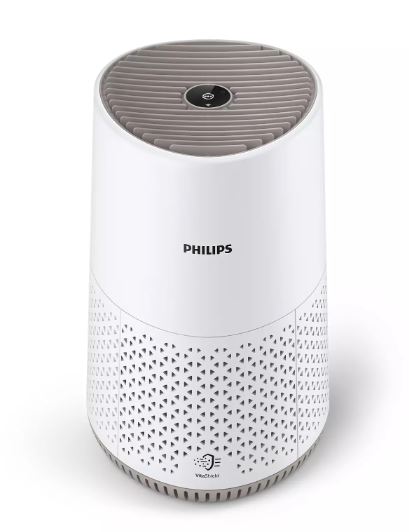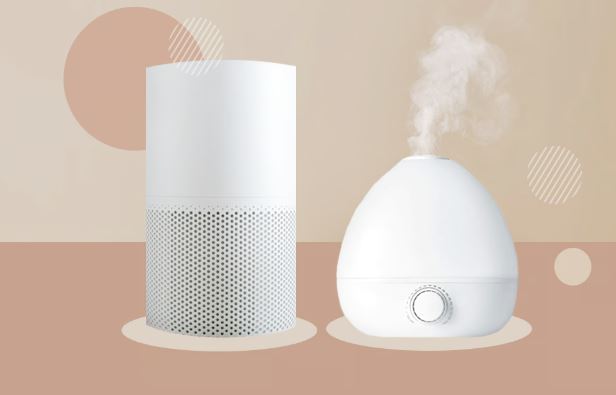Fighting Back Against Dust Mites: Air Purifiers for Allergy Relief
Fighting Back Against Dust Mites: Air Purifiers for Allergy Relief
Blog Article
In today's health-focused society, the air we breathe in has taken center stage for individuals across the globe. With increasing environmental pollution and a better understanding of the impacts of indoor air quality on our health, it's no surprise that the air purifier industry is experiencing tremendous growth.
Air purifiers are appliances that clean the air of pollutants in a given area, enhancing the air we breathe indoors. They are ideal for those with allergies, asthma, or respiratory concerns as they can significantly reduce the amount of allergens, pollutants, and irritants in the air. For those without respiratory concerns can rely on the added protection of air purifiers, as they provide reassurance and safeguard against airborne diseases.
This guide will explore in detail the fascinating realm of air purifiers, exploring their benefits, the variety of options on the market, crucial aspects to think about when choosing a purifier, and optimizing your purifier's performance. By the end, you should have a thorough grasp of air purifiers and be able to decide confidently about whether investing in one is the smart move for you and your family.

Understanding Air Pollutants and Their Effects on Well-being
To grasp the importance of air purification, it's essential to grasp the variety of contaminants they address and the likely impact of exposure to these contaminants.
Indoor air pollutants can be generally classified into the following three categories:
- Airborne Particles: This includes solid particles and liquid droplets suspended in the air. Examples include dust, smoke, pollen, pet dander, mold spores, and more. Particulate matter can lead to respiratory complications and cause allergic flare-ups.
- Volatile Organic Compounds (VOCs): VOCs are gases emitted from various solids or liquids. Sources of VOCs include cleaning agents, paints, aerosol sprays, pesticides, and similar products. Exposure to VOCs can lead to eye, nose, throat irritation, headaches, and stomach discomfort.
- Understanding Biological Contaminants: These include microbes such as bacteria, viruses, mold spores, and mildew. They can cause a spectrum of health concerns, from allergy symptoms to more serious health risks.
The impact of these contaminants on human health can differ considerably. For those suffering from respiratory ailments or weakened immune systems, exposure to indoor air pollutants can lead to severe complications. Even those in good health, chronic exposure to certain pollutants can increase the risk of respiratory conditions and other health concerns over time.

Unraveling Air Purification Technology
Air purifiers use a range of physical and chemical mechanisms to effectively eliminate contaminants. Understanding the basic mechanisms employed by purifiers will help you grasp how they work and the array of models on the market.
Here are the primary mechanisms and innovations used in air purifiers:
- Filtration Excellence: This is the most common method used in air purifiers. It involves using filters designed to trap airborne particles as air is drawn into the purifier. The filters can be made from various materials, each designed to capture specific types of particles. For example:
- Initial Defense: Pre-filters: These are usually the first line of defense, catching larger particles like dust and hair.
- HEPA (High-Efficiency Particulate Air) filters: HEPA filters are exceptionally efficient at trapping tiny particles, including bacteria, viruses, pollen, and dust mites. To be labeled a true HEPA filter, it must capture at least 99.97% of particles as small as 0.3 microns.
- carbon filtration: These filters are designed to reduce VOCs and odors.
- Ionizers: Ionizers use charged particles to create an abundance of negative ions, which attach themselves to particles in the air. The charged particles then stick to nearby surfaces or are attracted back to the purifier.
- Ozone Generators: Some air purifiers use ozone as a potent disinfectant to destroy contaminants. While effective, ozone is a respiratory irritant so these types of purifiers should be used with caution and only in unoccupied spaces.
- Ultraviolet (UV) Light: UV light can be used to neutralize bacteria, viruses, and mold spores. UV light and filters: a dynamic duo to capture particles first, followed by UV light to neutralize any remaining biological threats.
Selecting the Perfect Purifier
With a plethora of options available, selecting the right air purifier can be a daunting task. It's important to consider several factors to ensure you make the correct choice for your particular needs and room size.
Here are some crucial points to consider:
- Considering Room Size: Air purifiers are typically designed for specific areas, so it's important to choose a model that can effectively handle the square footage of the room. Most purifiers will list a maximum room size or a Clean Air Delivery Rate (CADR), which indicates the volume of filtered air delivered per minute.
- Understanding Contaminants: Identify the particular contaminants you want to target. If you suffer from allergies, look for a purifier with a HEPA filter. For reducing unwanted smells, consider a model with a carbon-based filter. If you're concerned about bacteria and viruses, a purifier with UV light disinfection might be best.
- Noise Level: Air purifiers can produce a range of noise outputs, so if you plan to use it in a quiet bedroom or tranquil space, look for models with a low-noise or sleep mode.
- Long-term Considerations: Consider the ongoing costs and maintenance requirements of the purifier. HEPA filtration systems may need periodic replacement, depending on use and environmental factors. Include filter replacement costs in your calculations when making your choice.
- Enhancing Your Experience: Many purifiers offer smart features like wireless connectivity, air quality sensors, and smart modes, allowing remote control and monitoring. These features can make your purifier more user-friendly and efficient.
Maximizing the Benefits of Your Air Purifier
Once you've chosen and set up your air purifier, there are several things you can do to ensure it operates at optimal levels and delivers the optimal results:
- Strategic Positioning: Position your purifier in an open area, away from walls and furniture, to ensure efficient air circulation. Avoid placing it near open windows or doorways as drafts can impact its efficiency.
- Round-the-clock Operation: For the best results, it's recommended to run your purifier regularly. Many models have low-energy settings or automatic modes that adapt to the air quality, so you can maintain fresh air without excessive energy costs.
- Filter Maintenance: Regularly follow the manufacturer's filter replacement guidelines. Over time, filters become saturated with particles, affecting efficiency. Schedule filter replacements so you don't forget.
- Limiting Indoor Pollutants: Alongside using an air purifier, take steps to minimize indoor air pollutants. This could include regularly vacuuming and dusting, using natural cleaning products, and minimizing the use of strong chemicals or aerosols. Report this page